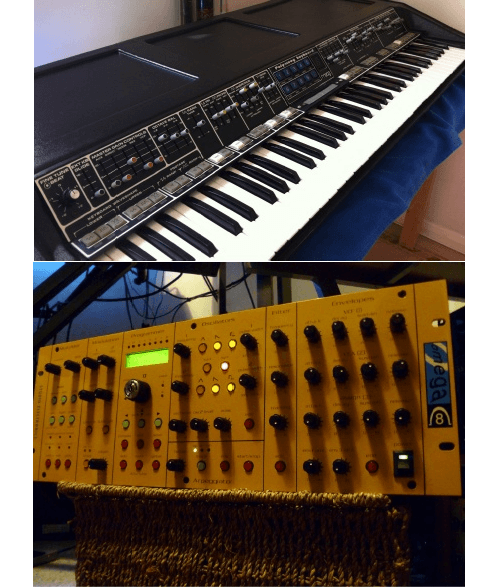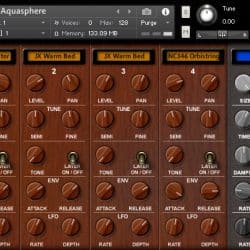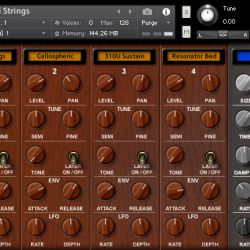Hideaway e-Grand – The 1938 Hammond Novachord, 1974 Farfisa Syntorchestra and 1976 Polymoog 203A are all examples of three early polysynths capable of producing piano like timbres.
The Novachord was without question the world’s first commercial all electronic polyphonic instrument designed to emulate the piano amongst other timbres.
To design something that electronically synthesized anything even remotely sounding like a piano in 1938 is nothing short of miraculous and a huge credit to the incredible ingenuity of Laurens Hammond and his fellow engineers!!
Please note: FULL retail version of Kontakt 4.2.4 or later is required. NOT for Kontakt Player.
$12.00

If you think I ever overstate this then look up his patents from the era – one of which is pretty much the definition of the basis of the modern analog synthesizer.
All have one thing in common in that they rely on formant synthesis to produce these tones.
As is often the case, such instruments tend to exhibit sweet spots over relatively narrow registers.
For a while now I thought it might be interesting to try and carefully blend the best of these registers captured from the three instruments in an attempt to try and create something where an evocative, expressive and playable nature was more the end goal than realism.
As it turned out the grainy organic nature of Hideaway’s very own and rather infamously “vintage calibrated” Novachord #346 provided a special ingredient in the lower registers, the Polymoog added much of the mid-range warmth and the really quite beautiful highs were thanks to the Syntorchestra with the help of the Omega 8.
After much play testing the samples were carefully layered and tube equalised.

After bringing together such a rare combination of instruments I thought it might be quite fitting to introduce some equally unusual signal processing technology.
I recently rescued a 1960’s Baldwin all tube “Panoramic” stereo spring reverb.
After building a high voltage power supply and modifying the spring to be centrally excited with a piezo ceramic transducer a pseudo stereo signal could be picked up from the two ends.
What is particularly unusual about Baldwin’s patented design is that the signal is AM modulated at 20KHz and passed over the spring as an ultrasonic wave.
The signal at the end of the spring is then received and demodulated back to audio.
The advantage of this technology is that the spring, rather bizarrely, is nothing like as sensitive to vibration as a normal spring reverb tank. It is also much less prone to the usual ricochet effects caused by high energy transients.
The frequency response is a little flatter too.
Although I found the reverb was a little noisy, it sounded surprisingly dense and complex so I created a series of impulse responses and was very excited to hear they worked remarkably well as a convolution reverb.
Almost by luck it turned out that the reverb worked nicely not only on vocals but also with piano.
In Kontakt some careful velocity to filter and attack mapping was applied along with sustain damper emulation.
All in all, an unusual combination of instruments resulting in a nique electronic piano with quite a lot of heart.
You must be logged in to post a review.


Reviews
There are no reviews yet.